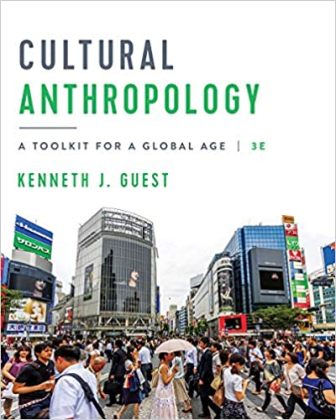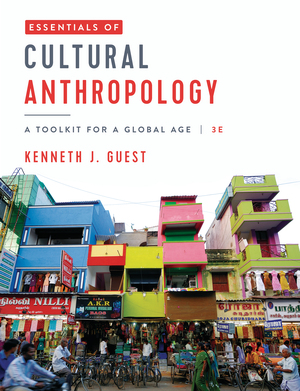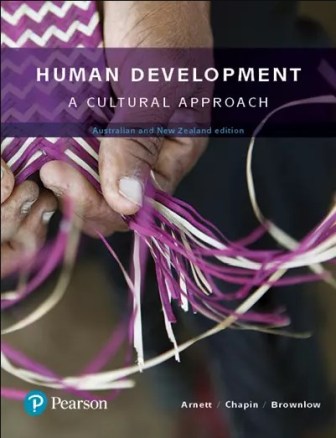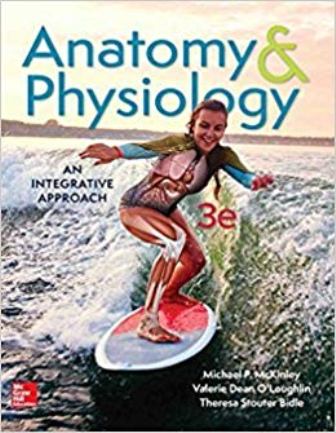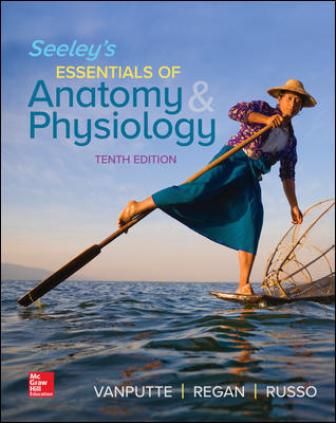找到
346
篇与
test bank
相关的结果
- 第 26 页
-
 Test Bank for Cultural Anthropology 3rd edition by J.GUEST Test Bank for Cultural Anthropology 3rd edition by J.GUESTTest Bank (Download Online) for Cultural Anthropology 3rd edition by J.GUESTTest Bank for Cultural Anthropology 3rd edition by J.GUEST Test Bank for Cultural Anthropology 3rd edition by Kenneth J. Guest ISBN 9780393428520 Table of Content Part 1: Anthropology for the 21st Century 1. Anthropology in a Global Age 2. Culture 3. Fieldwork and Ethnography 4. Language Part 2: Unmasking the Structures of Power 5. Race and Racism 6. Ethnicity and Nationalism 7. Gender 8. Sexuality 9. Kinship, Family, and Marriage 10. Class and Inequality Part 3: Change in the Modern World 11. The Global Economy 12. Environment and Sustainability 13. Migration 14. Politics and Power 15. Religion 16. Health and Illness 17. Arts and Mediafree sample download
Test Bank for Cultural Anthropology 3rd edition by J.GUEST Test Bank for Cultural Anthropology 3rd edition by J.GUESTTest Bank (Download Online) for Cultural Anthropology 3rd edition by J.GUESTTest Bank for Cultural Anthropology 3rd edition by J.GUEST Test Bank for Cultural Anthropology 3rd edition by Kenneth J. Guest ISBN 9780393428520 Table of Content Part 1: Anthropology for the 21st Century 1. Anthropology in a Global Age 2. Culture 3. Fieldwork and Ethnography 4. Language Part 2: Unmasking the Structures of Power 5. Race and Racism 6. Ethnicity and Nationalism 7. Gender 8. Sexuality 9. Kinship, Family, and Marriage 10. Class and Inequality Part 3: Change in the Modern World 11. The Global Economy 12. Environment and Sustainability 13. Migration 14. Politics and Power 15. Religion 16. Health and Illness 17. Arts and Mediafree sample download -
 Test Bank for Essentials of Cultural Anthropology A Toolkit for a Global Age 3rd Edition Guest Test Bank for Essentials of Cultural Anthropology A Toolkit for a Global Age 3rd Edition GuestTest Bank (Download Online) for Essentials of Cultural Anthropology A Toolkit for a Global Age, 3rd Edition by Kenneth J Guest, ISBN: 9780393428537, ISBN: 9780393420142Test Bank for Essentials of Cultural Anthropology A Toolkit for a Global Age 3rd Edition Guest Test Bank for Essentials of Cultural Anthropology A Toolkit for a Global Age, 3rd Edition by Kenneth J Guest, ISBN: 9780393428537, ISBN: 9780393420142 Table of Contents Part 1: Anthropology for the 21st Century 1. Anthropology in a Global Age 2. Culture 3. Fieldwork and Ethnography 4. Language Part 2: Unmasking the Structures of Power 5. Race and Racism 6. Ethnicity and Nationalism 7. Gender 8. Sexuality 9. Kinship, Family, and Marriage Part 3: Change in the Modern World 10. The Global Economy 11. Environment and Sustainability 12. Politics and Power 13. Religion 14. Health and Illness 15. Arts and Mediafree sample download
Test Bank for Essentials of Cultural Anthropology A Toolkit for a Global Age 3rd Edition Guest Test Bank for Essentials of Cultural Anthropology A Toolkit for a Global Age 3rd Edition GuestTest Bank (Download Online) for Essentials of Cultural Anthropology A Toolkit for a Global Age, 3rd Edition by Kenneth J Guest, ISBN: 9780393428537, ISBN: 9780393420142Test Bank for Essentials of Cultural Anthropology A Toolkit for a Global Age 3rd Edition Guest Test Bank for Essentials of Cultural Anthropology A Toolkit for a Global Age, 3rd Edition by Kenneth J Guest, ISBN: 9780393428537, ISBN: 9780393420142 Table of Contents Part 1: Anthropology for the 21st Century 1. Anthropology in a Global Age 2. Culture 3. Fieldwork and Ethnography 4. Language Part 2: Unmasking the Structures of Power 5. Race and Racism 6. Ethnicity and Nationalism 7. Gender 8. Sexuality 9. Kinship, Family, and Marriage Part 3: Change in the Modern World 10. The Global Economy 11. Environment and Sustainability 12. Politics and Power 13. Religion 14. Health and Illness 15. Arts and Mediafree sample download -
 Test Bank for Human Development: A Cultural Approach, Australian and New Zealand Edition 1st Edition Arnett Test Bank for Human Development: A Cultural Approach, Australian and New Zealand Edition 1st Edition ArnettTest Bank (Download Online) for Human Development: A Cultural Approach, Australian and New Zealand Edition, 1st Edition, Jeffrey Jensen Arnett, Laurie Chapin, Charlotte Brownlow, ISBN: 9781488619465Test Bank for Human Development: A Cultural Approach, Australian and New Zealand Edition 1st Edition Arnett Test Bank for Human Development: A Cultural Approach, Australian and New Zealand Edition, 1st Edition, Jeffrey Jensen Arnett, Laurie Chapin, Charlotte Brownlow, ISBN: 9781488619465 Table of contents 1. A Cultural Approach to Human Development 2. Genetics and Prenatal Development 3. Birth and the Newborn Child 4. Infancy 5. Toddlerhood 6. Early Childhood 7. Middle Childhood 8. Adolescence 9. Emerging Adulthood 10. Young Adulthood 11. Middle Adulthood 12. Late Adulthood 13. Death and Afterlife Beliefsfree sample download
Test Bank for Human Development: A Cultural Approach, Australian and New Zealand Edition 1st Edition Arnett Test Bank for Human Development: A Cultural Approach, Australian and New Zealand Edition 1st Edition ArnettTest Bank (Download Online) for Human Development: A Cultural Approach, Australian and New Zealand Edition, 1st Edition, Jeffrey Jensen Arnett, Laurie Chapin, Charlotte Brownlow, ISBN: 9781488619465Test Bank for Human Development: A Cultural Approach, Australian and New Zealand Edition 1st Edition Arnett Test Bank for Human Development: A Cultural Approach, Australian and New Zealand Edition, 1st Edition, Jeffrey Jensen Arnett, Laurie Chapin, Charlotte Brownlow, ISBN: 9781488619465 Table of contents 1. A Cultural Approach to Human Development 2. Genetics and Prenatal Development 3. Birth and the Newborn Child 4. Infancy 5. Toddlerhood 6. Early Childhood 7. Middle Childhood 8. Adolescence 9. Emerging Adulthood 10. Young Adulthood 11. Middle Adulthood 12. Late Adulthood 13. Death and Afterlife Beliefsfree sample download -
 Solution Manual for Anatomy & Physiology: An Integrative Approach 3rd Edition by McKinley Solution Manual for Anatomy & Physiology: An Integrative Approach 3rd Edition by McKinleySolution Manual for Anatomy & Physiology: An Integrative Approach 3rd Edition by McKinleySolution Manual for Anatomy & Physiology: An Integrative Approach 3rd Edition McKinley Solution Manual for Anatomy & Physiology: An Integrative Approach, 3rd Edition, Michael McKinley, Valerie O’Loughlin, Theresa Bidle, ISBN10: 1259398625, ISBN13: 9781259398629 Table of Contents 1. The Sciences of Anatomy and Physiology 2. Atoms, Ions, and Molecules 3. Energy, Chemical Reactions, and Cellular Respiration 4. Biology of the Cell 5. Tissue Organization 6. Integumentary System 7. Skeletal System: Bone Structure and Function 8. Skeletal System: Axial and Appendicular Skeleton 9. Skeletal System: Articulations 10. Muscle Tissue 11. Muscular System: Axial and Appendicular Muscles 12. Nervous System: Nervous Tissue 13. Nervous System: Brain and Cranial Nerves 14. Nervous System: Spinal Cord and Spinal Nerves 15. Nervous System: Autonomic Nervous System 16. Nervous System: Senses 17. Endocrine System 18. Cardiovascular System: Blood 19. Cardiovascular System: Heart 20. Cardiovascular System: Vessels and Circulation 21. Lymphatic System 22. The Immune System and the Body’s Defense 23. Respiratory System 24. Urinary System 25. Fluid and Electrolytes 26. Digestive System 27. Nutrition and Metabolism 28. Reproductive System 29. Development,Pregnancy, and Heredityfree sample download
Solution Manual for Anatomy & Physiology: An Integrative Approach 3rd Edition by McKinley Solution Manual for Anatomy & Physiology: An Integrative Approach 3rd Edition by McKinleySolution Manual for Anatomy & Physiology: An Integrative Approach 3rd Edition by McKinleySolution Manual for Anatomy & Physiology: An Integrative Approach 3rd Edition McKinley Solution Manual for Anatomy & Physiology: An Integrative Approach, 3rd Edition, Michael McKinley, Valerie O’Loughlin, Theresa Bidle, ISBN10: 1259398625, ISBN13: 9781259398629 Table of Contents 1. The Sciences of Anatomy and Physiology 2. Atoms, Ions, and Molecules 3. Energy, Chemical Reactions, and Cellular Respiration 4. Biology of the Cell 5. Tissue Organization 6. Integumentary System 7. Skeletal System: Bone Structure and Function 8. Skeletal System: Axial and Appendicular Skeleton 9. Skeletal System: Articulations 10. Muscle Tissue 11. Muscular System: Axial and Appendicular Muscles 12. Nervous System: Nervous Tissue 13. Nervous System: Brain and Cranial Nerves 14. Nervous System: Spinal Cord and Spinal Nerves 15. Nervous System: Autonomic Nervous System 16. Nervous System: Senses 17. Endocrine System 18. Cardiovascular System: Blood 19. Cardiovascular System: Heart 20. Cardiovascular System: Vessels and Circulation 21. Lymphatic System 22. The Immune System and the Body’s Defense 23. Respiratory System 24. Urinary System 25. Fluid and Electrolytes 26. Digestive System 27. Nutrition and Metabolism 28. Reproductive System 29. Development,Pregnancy, and Heredityfree sample download -
 Test Bank for Seeley’s Essentials of Anatomy and Physiology 10th Edition VanPutte Test Bank for Seeley’s Essentials of Anatomy and Physiology 10th Edition VanPutteTest Bank (Download Online) Seeley’s Essentials of Anatomy and Physiology 10th Edition VanPutteTest Bank for Seeley’s Essentials of Anatomy and Physiology 10th Edition VanPutte Test Bank for Seeley’s Essentials of Anatomy and Physiology, 10th Edition, Cinnamon VanPutte, Jennifer Regan, Andrew Russo, ISBN10: 1259864642, ISBN13: 9781259864643 Table of Contents 1. Human Organism 2. Chemical Basis of Life 3. Cell Structures and Their Functions 4. Tissues 5. Integumentary System 6. Skeletal System: Bones and Joints 7. Muscular System 8. Nervous System 9. Senses 10. Endocrine System 11. Blood 12. Heart 13. Blood Vessels and Circulation 14. Lymphatic System and Immunity 15. Respiratory System 16. Digestive System 17. Nutrition, Metabolism, and Body Temperature Regulation 18. Urinary System and Fluid Balance 19. Reproductive System 20. Development, Heredity, and Agingfree sample download
Test Bank for Seeley’s Essentials of Anatomy and Physiology 10th Edition VanPutte Test Bank for Seeley’s Essentials of Anatomy and Physiology 10th Edition VanPutteTest Bank (Download Online) Seeley’s Essentials of Anatomy and Physiology 10th Edition VanPutteTest Bank for Seeley’s Essentials of Anatomy and Physiology 10th Edition VanPutte Test Bank for Seeley’s Essentials of Anatomy and Physiology, 10th Edition, Cinnamon VanPutte, Jennifer Regan, Andrew Russo, ISBN10: 1259864642, ISBN13: 9781259864643 Table of Contents 1. Human Organism 2. Chemical Basis of Life 3. Cell Structures and Their Functions 4. Tissues 5. Integumentary System 6. Skeletal System: Bones and Joints 7. Muscular System 8. Nervous System 9. Senses 10. Endocrine System 11. Blood 12. Heart 13. Blood Vessels and Circulation 14. Lymphatic System and Immunity 15. Respiratory System 16. Digestive System 17. Nutrition, Metabolism, and Body Temperature Regulation 18. Urinary System and Fluid Balance 19. Reproductive System 20. Development, Heredity, and Agingfree sample download
